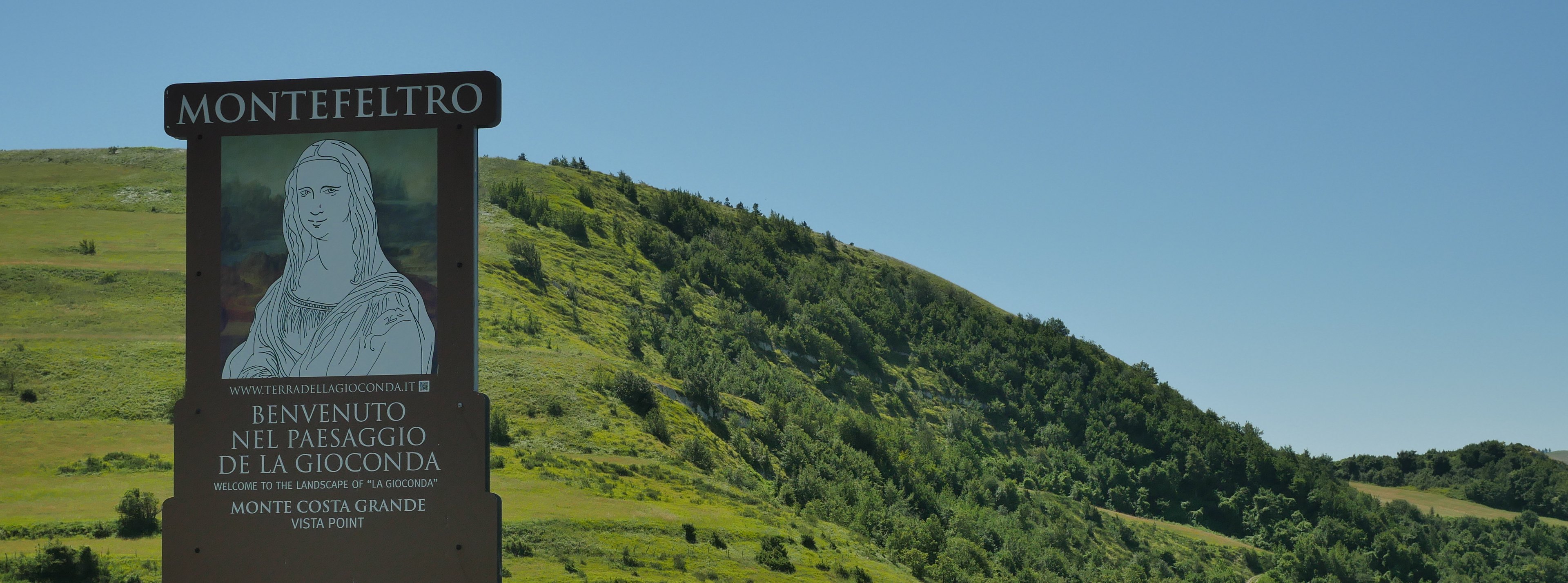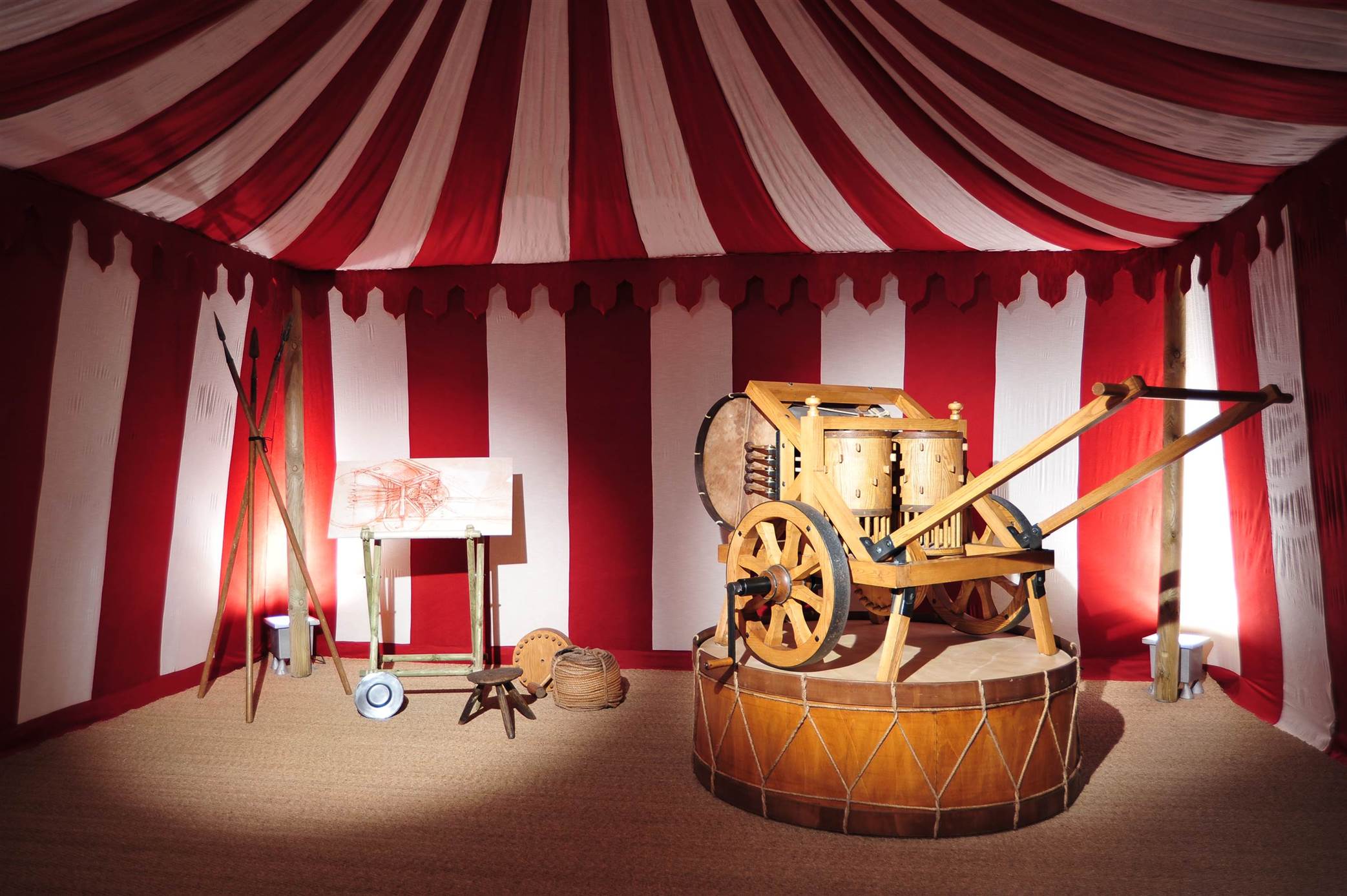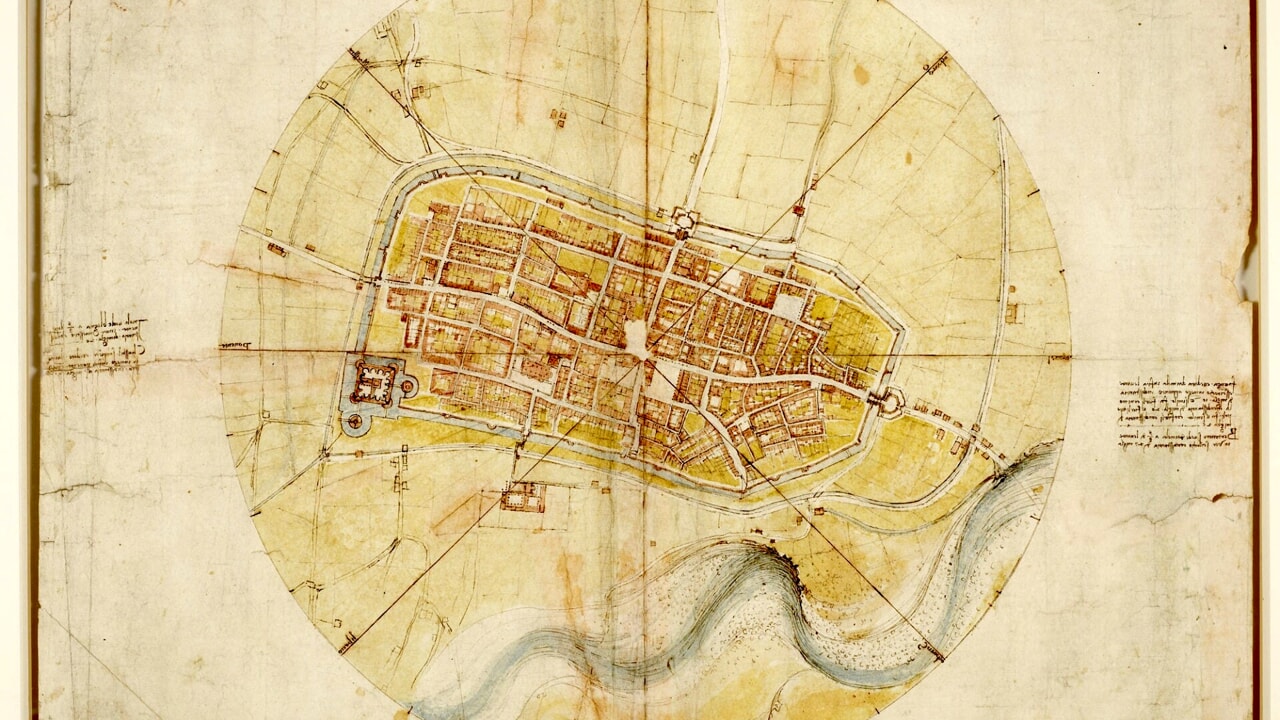
The trail Leonardo da Vinci and Cesare Borgia: ingenuity and intellect at the service of the duchy follows the footsteps of Leonardo da Vinci as he journeyed through Romagna in 1502 at the behest of Cesare Borgia, the duke also known as “Il Valentino”.
The route covers five provinces: Forlì, Cesena, Ravenna, Rimini and Ferrara with a particular focus on the city of Imola. Imola is where Leonardo produced his famous map of the city: a work with immense artistic and cartographic value that underlines his close ties to the Borgia duchy.
Cesare Borgia’s plan was to unite Romagna into a single duchy. With this aim in mind, in mid-November 1499, he set off to conquer Castel Bolognese, imprisoning the “enemy” ambassadors in the fortress of Castel San Pietro. This was the start of Borgia’s military campaign against Forlì and the countess Caterina Sforza, who took refuge in the castle for three weeks.
Cesare Borgia took the role of papal vicar, and in fact today, his coat-of-arms can still be seen at the fortress of Castel Bolognese, right at the point where (as legend has it), the walls were breached and the army of the Duke of Valentinois gained entry.
In the summer of 1503, it seemed that nothing would ever stop Cesare Borgia. Exploiting his military, political and dynastic gifts to the full, Borgia completed the formation of his duchy as he headed for San Leo.
Leonardo da Vinci came to Romagna thanks to the hospitality offered by the court of Cesare Borgia. Having conquered every corner of Romagna, the military leader now needed to consolidate his domain by building modern civil and military infrastructure.
At this point he requested the assistance of Leonardo da Vinci, whose work was already well-known by that time. Today, we only know about Leonardo’s tour of Romagna thanks to Manuscript L, the journal in which the artist took notes and made studies on topics such as fortifications, excavations, engineering problems, the flight of birds, the movement of water and arithmetic.
Cesena, as one of the main seats of the duchy of Cesare Borgia, is the city with the largest number of works designed by Leonardo. Most of them were certainly defensive structures. At Villa Silvia Carducci, home to the remarkable Museum of Musicalia, it is possible to see one of the very first examples of mechanical musical instruments in history: Leonardo da Vinci’s mechanical drum.
It was Leonardo’s passion for musical instruments that took him to Rimini, where he made notes about questions related to war and military combat but also continued to think about other questions, such as how to create complex acoustic systems to be used for entertainment at court.
Moving on to Cesenatico, one of the best places to visit is certainly Porto Canale, today one of the most important monuments in the city, and where visitors can fully appreciate the architectural beauty and warm atmosphere of this seaside town.
At “3 in the afternoon on 6 September 1502” Leonardo was in Cesenatico, intent on designing his plan for the Porto Canale (which would remain on paper). Climbing the Malatesta tower on the outskirts of the town (it is now in ruins), he sketched a panoramic view of the little seaside village.
Leonardo da Vinci’s “Romagna period” is the subject of the museum at Sogliano al Rubicone, whose aim is to illustrate the local traditions and characteristics of the area, through the observations and studies of this extraordinary man of engineering.
The itinerary is a narration of his inventions linked to the Renaissance towns he visited during his life, and also tells of Leonardo da Vinci’s studies, including a discovery of the strongholds and fortresses conquered during the great military campaign of Cesare Borgia, duke of Romagna from 1501 to 1503. The trail also includes a section on the eventful life of Caterina Sforza, the lady of Forlì and feared rival of Cesare Borgia, who is inextricably linked to the lives of these two celebrated figures from history.
TECHNICAL INFORMATION
Distance: 377 km
Download gpx:

